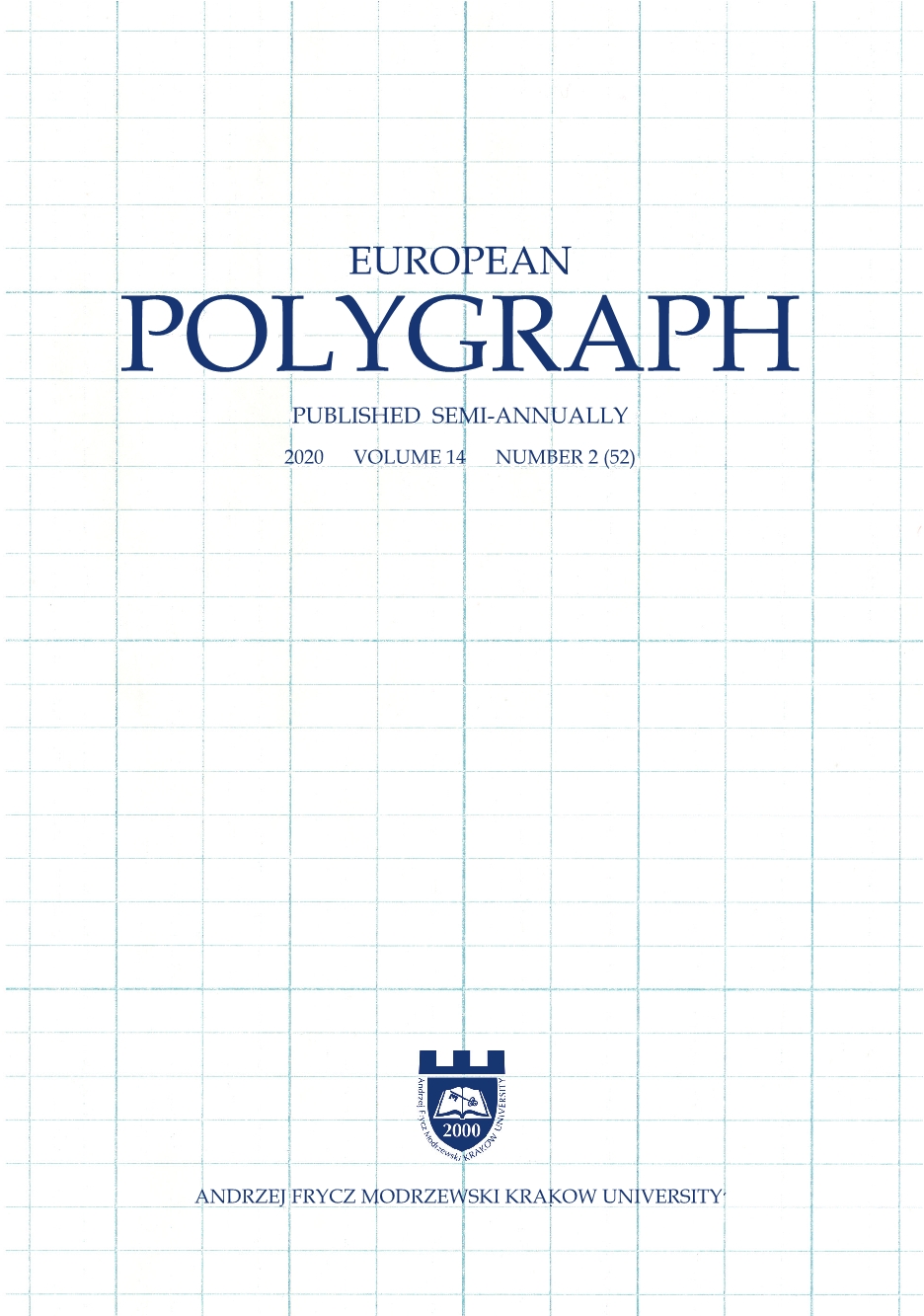Electrodermal Response Ratios: Scoring Against the Stronger of Two Comparison Questions in Search of an Optimal Minimum Threshold
Electrodermal Response Ratios: Scoring Against the Stronger of Two Comparison Questions in Search of an Optimal Minimum Threshold
Author(s): Donald J. KrapohlSubject(s): Methodology and research technology, Evaluation research, Criminology
Published by: Oficyna Wydawnicza AFM Uniwersytetu Andrzeja Frycza Modrzewskiego w Krakowie
Keywords: polygraph examination; electrodermal activity; galvanic skin response (GSR); electrodermal response (EDR); Bigger-Is-Better Rule (BIBR);
Summary/Abstract: Previously, Krapohl (2020) evaluated the Bigger-Is-Better Rule (BIBR) on the polygraph electrodermal channel to assess whether there was a best minimum ratio between response sizes for assigning a score. Performance peaked at a minimum ratio between 10% and 20%. The ratios had been calculated by comparing the electrodermal responses for each relevant question against those of the immediately preceding comparison question. The analysis did not consider whether the same optimal ratio would be found if the relevant question electrodermal responses are compared to those of the stronger of two adjacent comparison questions. To investigate we analyzed responses from an independent sample of 255 laboratory cases. The data from those cases found the highest correlation between scores and ground truth occurred when the minimum difference between two electrodermal responses was 30%.
Journal: European Polygraph
- Issue Year: 14/2020
- Issue No: 2 (52)
- Page Range: 9-16
- Page Count: 8
- Language: English

